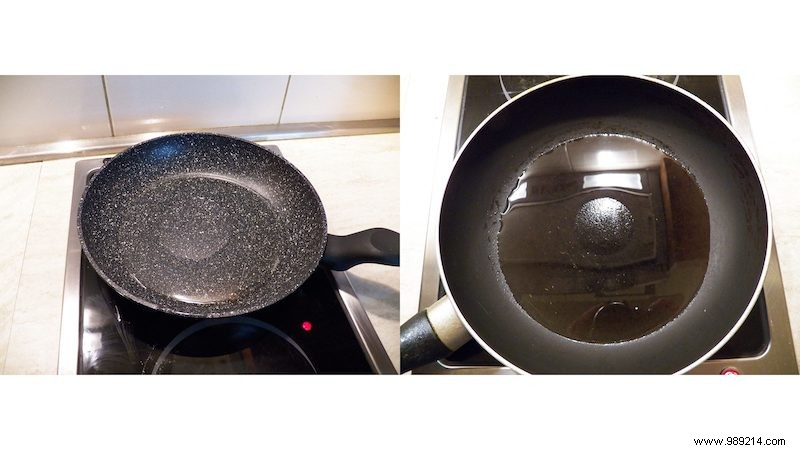Despite the use of non-stick frying pans, food will sometimes stick to a heated surface, even if oil is used. The results can be very messy and unappetising. Scientists from the Czech Academy of Sciences began investigating the liquid properties of oil on a flat surface, such as a frying pan. Their work shows that convection may be to blame for our stuck-on food.
In the experimental study, a non-stick pan with a ceramic particle surface was used. A video camera was placed over the pan as it heated and was used to measure the rate at which a dry spot formed and grew. Further experiments with a Teflon-coated pan showed the same.
“We experimentally explained why food sticks to the center of the skillet,” said author Alexander Fedorchenko. “This is caused by the formation of a dry spot in the thin sunflower oil film as a result of thermocapillary convection.”
When the pan is heated from below, a temperature gradient is created in the oil film. For common liquids, such as the sunflower oil used in the experiment, the surface tension decreases as the temperature rises. A surface tension gradient is created, directed away from the center where the temperature is higher and towards the periphery of the pan.
This gradient creates a type of convection known as thermocapillary convection, which moves oil out. When the oil film in the center becomes thinner than a critical value, the film tears.

Credit:Alex Fedorchenko
The researchers determined the conditions that lead to dry patches for both stationary and flowing films. These conditions include a decrease in the local film thickness below a critical dimension, as well as a decrease in the deformed area below a number known as the capillary length.
“To avoid unwanted dry spots, the following measures should be taken:increase the oil film thickness, moderate heating, moisten the surface of the pan completely with oil, use a pan with a thick bottom, or stir frequently during cooking,” Fedorchenko said.
The phenomenon also occurs in other situations, such as the thin liquid films used in fluid distillation columns or other devices that may have electronic components.
“Dry staining or film breakage plays a negative role, resulting in strong overheating of the electronic components,” said Fedorchenko.